The following steps are what I did for installing 12.1.0.2 on Windows.
1. Download the Oracle installation ZIP files from the Oracle Downloads page.
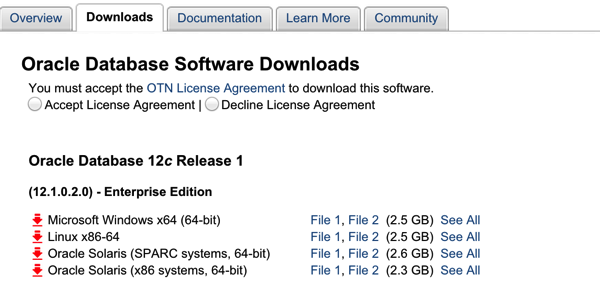
2. Unzip the two 12c downloads files into the same directory.
3. Go to the newly created directory (it is probably called 'database') and you will find a file called setup.exe. Double click on this file.
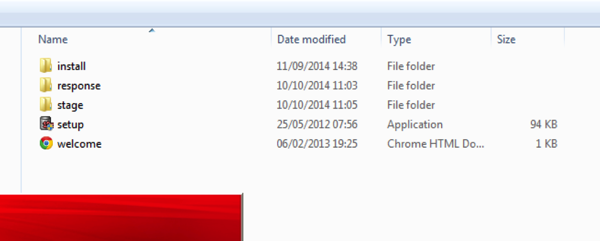
After a couple of seconds you will see the Oracle Database 12c splash screen.
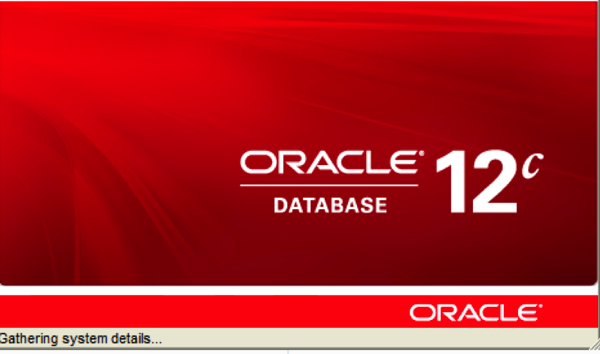
4. Step 1 : Configure Security Updates : Un-tick the tick-box and click the Next button. A warning message will appear. You can click on the Yes button to proceed.

5. Step 2 : Installation Options : select the Create and Configure a Database option and then click the Next button.
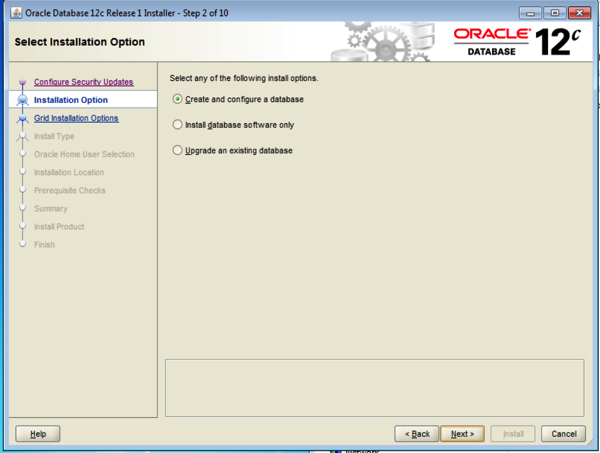
6. Step 3 : System Class : Select the Server Class option and then click the Next button.
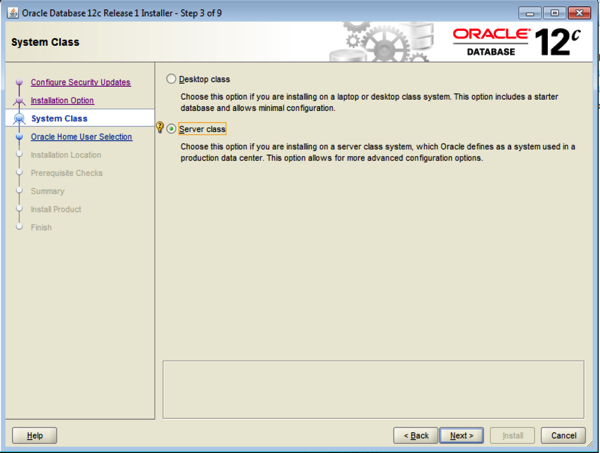
7. Step 4 : Grid Installation Options : Select the Single Instance Database Installation option and then click the next button.
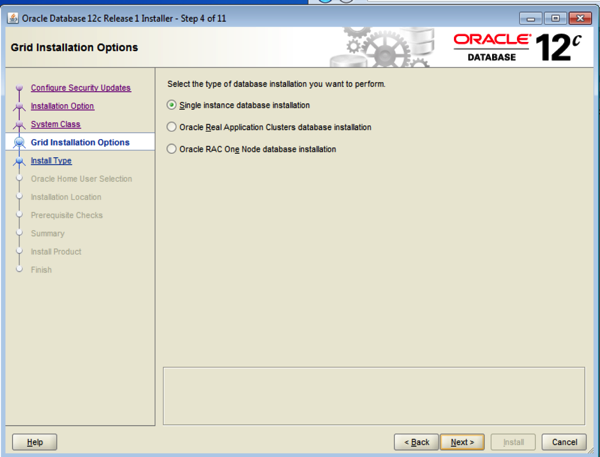
8. Step 5 : Select Install Type : Select the Typical install option and then click the Next button.
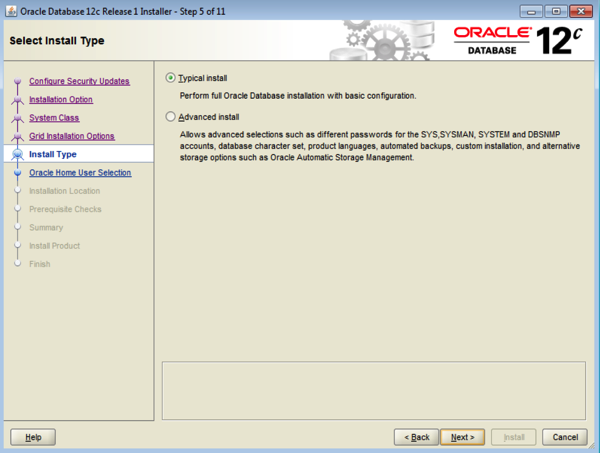
9. Step 6 : Oracle Home User Selection : Select the Use Windows Built-in Account option and then click the Next button. A warning message appears. Click the Yes button.
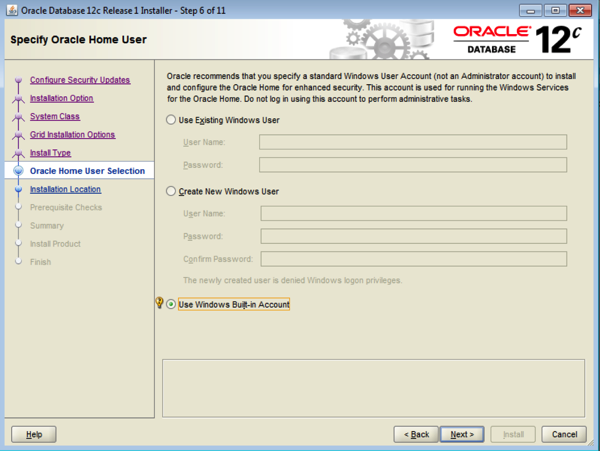
10. Step 7 : Typical Install Configuration : Set Global Database Name to cdb12c for the container database name. Set the Administrative password for the container database. Set the name of the pluggable database that will be created. Set this to pdb12c. Or you can accept the default names. Then click the Next button. If you get a warning message saying the password does not conform to the recommended standards, you can click the Yes button to ignore this warning and proceed.
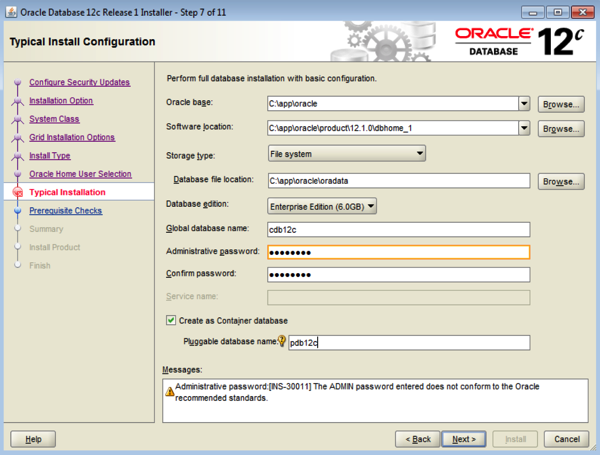
11. Step 8 : Prerequisite Checks : the install will check to see that you have enough space and necessary permissions etc.
12. Step 9 : Summary : When the prerequisite checks (like checking you have enough space and privileges) are finished you will get a window like the following.
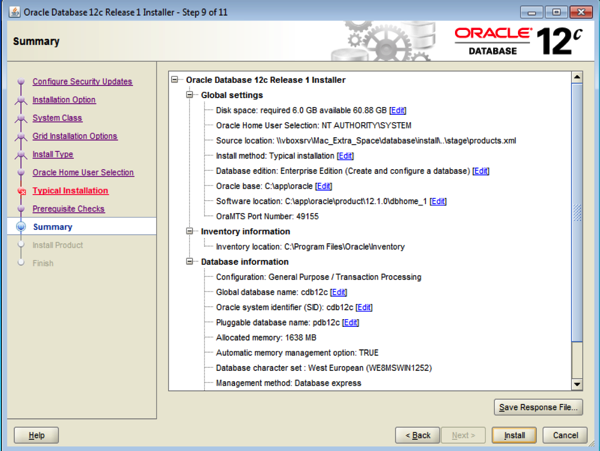
13. Step 10 : Install : You are now ready to start the install process. To do this click on the Install button in the Summary screen.
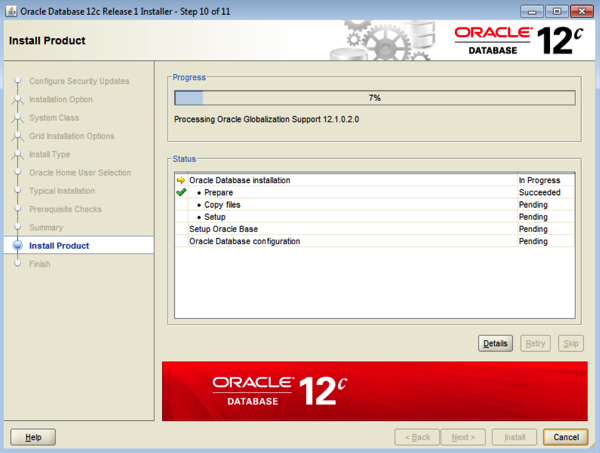
You can now sit back, relax and watch the installation of 12.1.0.2c (with the in-memory option) complete.
You may get some Windows Security Alert windows pop up. Just click on the Allow Access button.
Then the Database Configuration Assistant will start. This step might take a while to complete.
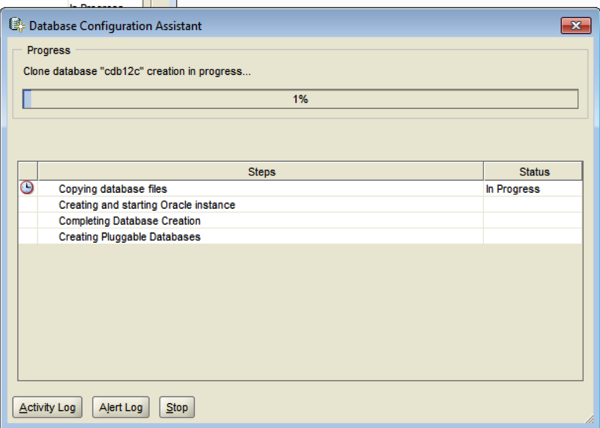
When everything is done you will get something like the following.
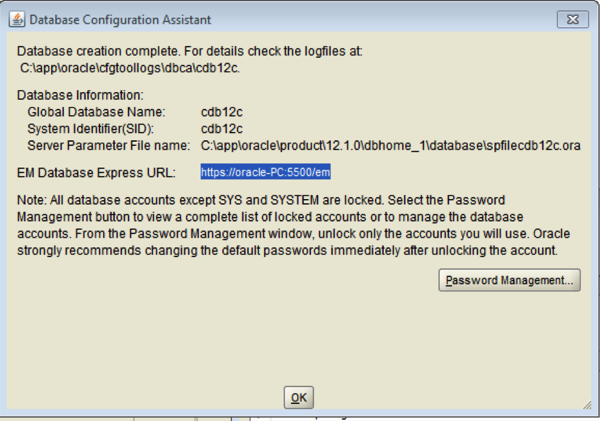
Congratulations you now have Oracle Database 12.1.0.2c installed.
But you are not finished yet!!!
14. Add entry to TNSNAMES.ORA : you will need to add an entry to your tnsnames.ora file for the pluggable database. There is be an entry for the container DB but not for the pluggable. Here is what I added to my tnsnames.ora.
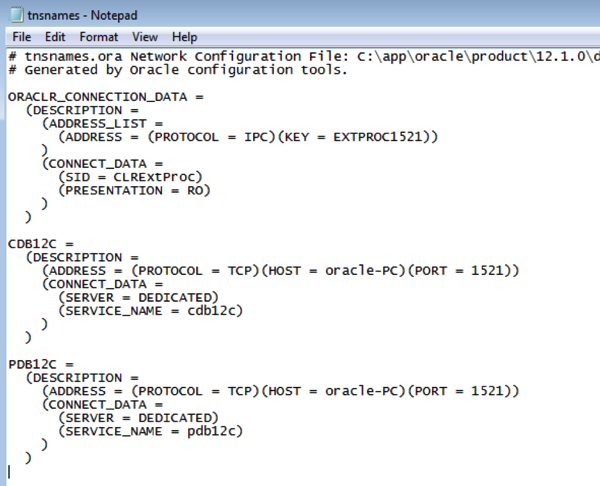
The last step you need to do is to tell the container database to start up the pluggables when you reboot the server/laptop/PC/VM. To do this you will need to create the following trigger in the container DB.
sqlplus / as sysdba
CREATE or REPLACE trigger OPEN_ALL_PLUGGABLES
after startup
on database
BEGIN
execute immediate 'alter pluggable database all open';
END open_all_pdbs;
Restart your database or machine and you plug gage DB 'pdb12c' will no automatically start.
You are all finished now :-)
Enjoy :-)




















